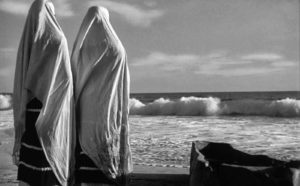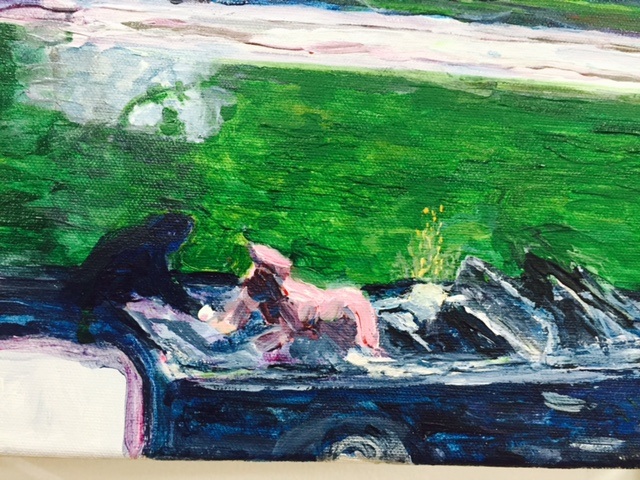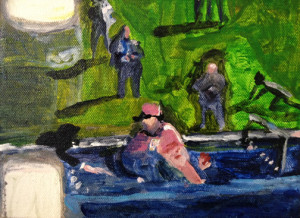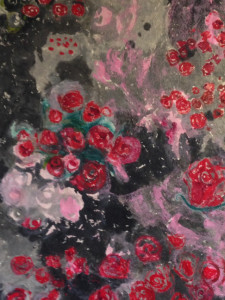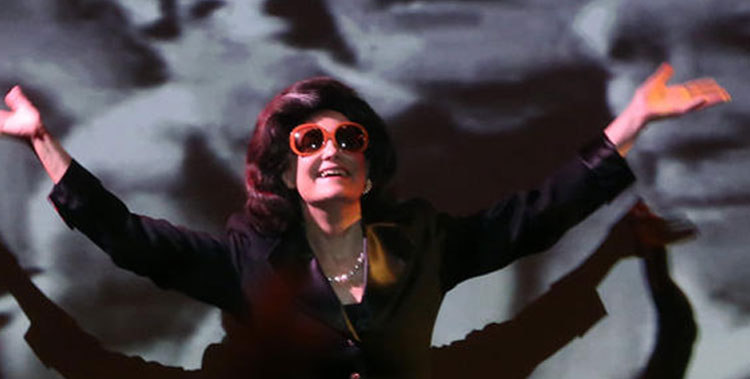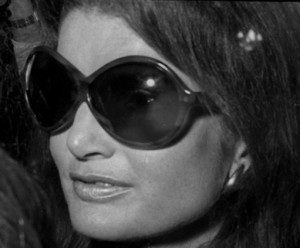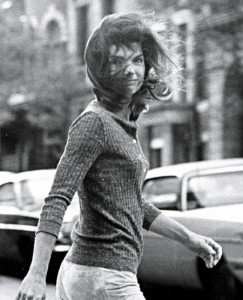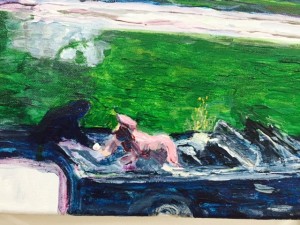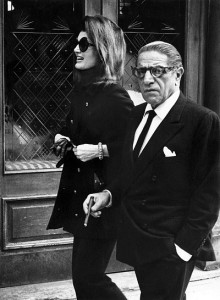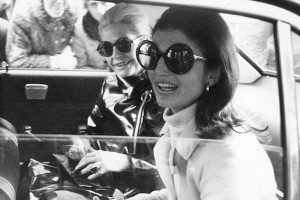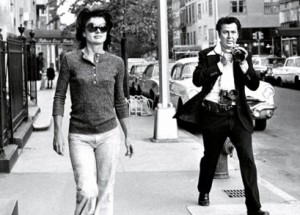Your cart is currently empty!
Tag: Karen Finley
-

Coming Down From Machu Picchu – or – the Afterglow
So I was on the phone with my pal Mary the other day and we were talking about how, between our respective work deadlines and obligations, and taking care of our quadruped loved ones, we essentially never went out anymore. “I mean it’s not as if we’ll ever catch up on our reading and the movies suck so what’s the point?”
I have to say that between the state of the world, the security state the country is becoming – which only leaves people like us feeling tremendously insecure (and recent news events seem to reinforce our apprehensions); the dearth of fresh popular entertainment options (the recycled, remixed, regurgitated sameness of most new music in the pop sphere; consistently fatal deficiencies in both genre and original films – most of which are written into their scripts – particularly the Hollywood variety); and the incidental expenses entailed by any foray beyond the immediate neighborhood – the incentives are lacking.
That said, the reading is pretty great. I’m reading Eileen Myles’ Afterglow, a memoir of the decline and death of her pit bull, Rosie; it’s relentlessly self-confrontational and sheer poetry on every page.
 Who needs a Hitchcock movie when we can feel ourselves, individually and as a species, complicit in a crime of violation – personal, social, spatial, environmental – in the pages of a book like this? And all bound up in a testament of unconditional love and animal bonding like no other. It’s a kind of prose-poetry that can be both brutally specific and impressionistic all at once; and like the experience of a life-death transition completely immersive.
Who needs a Hitchcock movie when we can feel ourselves, individually and as a species, complicit in a crime of violation – personal, social, spatial, environmental – in the pages of a book like this? And all bound up in a testament of unconditional love and animal bonding like no other. It’s a kind of prose-poetry that can be both brutally specific and impressionistic all at once; and like the experience of a life-death transition completely immersive. 
Myles/Rosie manage to show us something of the constant negotiation and renegotiation that is both the groundwork and constant refinement of the unspoken rules of social conduct, both within and between species – and the not-infrequent breaches and violations that occur. It’s a phenomenon that remains at the foundation of the social compact underlying both legislated guidelines and ordinary social norms. It’s also something we need to be reminded of because everywhere today you see people giving up on the process. It’s both a top-down and bottom-up phenomenon. Which reminded me of a passage in Hillary Clinton’s What Happened (another book I just read) where she talks about taking in a few television newsclips before heading to Wellesley to give a commencement speech – and being instantly appalled.

Specifically, the Montana election of Greg Gianforte to Congress after body-slamming a Guardian reporter and the Psychofuck-in-Chief shoving the prime minister of Montenegro to get a front-center place in a group photograph. “It was hard not to see the two stories as related, both symbols of our degraded national life in the Age of Trump.” And you see it in the casual brutality of the way people treat each other in everyday situations – equal parts delusional psychology and simple competition for space (there’s just not enough to go around anymore).
“ROSIE: They put their hands inside of you, don’t they? Same idea. Using whatever they’ve chosen – law, sex, poetry, whatever they choose … they try to do that to the world.”
Yeah, I’d say that about sums it up – although we’re starting to see a bit of push-back lately…. #MeToo.
I realize most millenials will not immediately get the aforementioned ‘Hitchcock movie’ reference. So kids – just delete the ‘Hitchcock’ and swap in ‘suspense.’ It’s not quite as meaningful and it might be tough to find something at that level of … well, can I say ‘style’? – but it’s out there. I think there’s almost as much suspense available in documentaries in recent years. As the world more or less blows apart and the news gets more terrifying and more surreal, the stuff of real-life drama easily eclipses anything that could be invented or parodied.
That said … I haven’t stopped going out entirely. I’m still basking in the glow of the best concert and possibly best event of any kind ever produced at the Hammer Museum – the Voices of the Xtabay concert tribute to Yma Sumac that would have done Sumac proud and possibly blown her mind to another plateau, vocal and Peruvian both.
 Without going into the particulars of a performance that promised to be spectacular simply given the incomparable foundational support of an ensemble of superb musicians led by percussionist Albert López, who in turn guided, supported and backed up a mostly local and stellar line-up that included Empress of (Lorelei Rodriguez), Nite Jewel (Ramona Gonzalez) – completely worthy of their names, the both of them; Maria Elena Altany, Ceci Bastida, Carmina Escobar, Dorian Wood and Francisca Valenzuela – I will sum it up in a single word: ecstatic.
Without going into the particulars of a performance that promised to be spectacular simply given the incomparable foundational support of an ensemble of superb musicians led by percussionist Albert López, who in turn guided, supported and backed up a mostly local and stellar line-up that included Empress of (Lorelei Rodriguez), Nite Jewel (Ramona Gonzalez) – completely worthy of their names, the both of them; Maria Elena Altany, Ceci Bastida, Carmina Escobar, Dorian Wood and Francisca Valenzuela – I will sum it up in a single word: ecstatic.
So it’s hard to come down from Machu Picchu. My transition back to the harsh realities of my everyday life were eased somewhat by the consolation of the Jonathan Biss recital I took in the following day at The Wallis. Biss has achieved a certain renown as a Beethoven scholar; and I was thrilled that a sonata particularly on my mind lately was on the program, the Opus 31, No. 2 d minor, known as “The Tempest” – a landmark and one of the greatest of the 32 he wrote and a milestone for all music students. Biss’s approach is almost literary. He wants you to hear the rhyming scheme he makes of key, motive, rhythm and tempo from one piece to the next. Here he was tracing a line from Beethoven’s mature but convulsive, proto-modernist masterpiece to Schumann – specifically the C major Fantasie – which is quite a leap, to say nothing of the actual feat of playing it (the program began with a Mozart sonata, K310 a minor).
 Ultimately, I felt the cumulative impact was more clinical than poetic. But even spoken poetry can come across this way, as a poet like Myles would be the first to recognize. The poetry is still there; and it’s always a privilege to be in this poet-musician’s head for a couple of hours.
Ultimately, I felt the cumulative impact was more clinical than poetic. But even spoken poetry can come across this way, as a poet like Myles would be the first to recognize. The poetry is still there; and it’s always a privilege to be in this poet-musician’s head for a couple of hours.The following day was set to begin at the crack of dawn, so I would not be dancing my ass off to Janet Jackson as originally planned. But the following Thursday, I took in Karen Finley’s Expanded Unicorn Gratitude Mystery at REDCAT. A Finley performance evinces a similarly musical – but also densely political – poetics; but the point of germination is frequently the exact pitch or tone we’ve semi-unconsciously tuned out or deeply repressed, something almost buried yet still perceptible in the social fabric – and that once isolated can be recognized for the noxious phenomenon it is.

There is something to be said for the simple quality of gratitude; there are days when I can be grateful just looking out my front door; for a single word; a musical figure, a riff. But there’s something going on in the social space – or that part of it hijacked by corporate and congressional hacks ‘putting their hands inside’ us (and our pockets) as Myles’ Rosie might put it; and Finley was all over it. Somehow, somewhere between corporate and consumer culture, gratitude has devolved into groveling; and too often we’re maneuvered, cornered into this fawning minuet – or shamed if we abstain from it. Completely obscured in the transaction is that we frequently have less and less to be grateful for. (This is seems to be the standard ploy and PR strategy of most Republican Party-initiated legislation.) In other words, these are situations where gratitude is explicitly not called for. So get your hands out of our pockets, off our pussies, stop trying to bully us, just give us what we paid for and go away.
Far away is not far enough for some of us…. (And of course Finley went there….) A different kind of exoticism was on display later in the month at the Los Angeles Opera. I knew Penny Woolcock’s and Dick Bird’s English National Opera production of Bizet’s The Pearl Fishers (Les Pêcheurs de perles – libretto by Eugène Cormon and Michel Carré) would be a must; and in this moment it had a kind of pathos and splendor I wasn’t quite prepared for. It was the kind of dazzle that could take you into the depths – assisted by some brilliant staging and effects and not only the signature first act pearl fishers’ duet (“au fond du temple saint…”), but Nino Machaidze showing off her gorgeous soprano in the second act with her solo “seule dans la nuit, ce lieu desert…” aria and her duet with Javier Camarena in the role of Nadir, the once-estranged pearl fisher.
 (It was the most brilliant performance I’ve seen her give to date.) Alfredo Daza as Zurga seemed almost churlish to resist her entreaties, quite apart from the legacy Zurga unconsciously betrays in his resistance. As creakily as the opera has aged, there were treasures, ‘pearls’ yet to be salvaged from it. The program notes made reference to the opera’s obvious ‘orientalism’; but even as we took in its kaleidoscopic scenic and melodic splendors, it was impossible to ignore what lay beyond the surface, beyond the stranglehold of custom and religious orthodoxy, beyond the characters’ gaze itself.
(It was the most brilliant performance I’ve seen her give to date.) Alfredo Daza as Zurga seemed almost churlish to resist her entreaties, quite apart from the legacy Zurga unconsciously betrays in his resistance. As creakily as the opera has aged, there were treasures, ‘pearls’ yet to be salvaged from it. The program notes made reference to the opera’s obvious ‘orientalism’; but even as we took in its kaleidoscopic scenic and melodic splendors, it was impossible to ignore what lay beyond the surface, beyond the stranglehold of custom and religious orthodoxy, beyond the characters’ gaze itself.It was almost as if the opera opened with its postscript – a resonant foreshadowing rendered as an aquatic arabesque projected onto a scrim – ‘pearl divers’ making their way down to the oyster beds. (The projections were rendered by 59 Productions, the company also responsible for the landmark V&A show, David Bowie is.) Through the music, the orientalism and Machaidze’s gorgeous costumes, we could nevertheless sense the deluge of water and fire both forthcoming not so long après nous. Yet we also came away with the same sense of mystery and inexorable tragedy we might take from Gabriel Figueroa’s starkly modern cinematography in The Pearl – we ‘gazed at this splendor with eyes we’d not used yet.’

-

Trust the Momentum – Karen Finley: Love Field
If there was a central flaw or fracture to Karen Finley’s The Jackie Look, it had mostly to do with a lack of clarity of its dramatic objective and trajectory. Finley seemed to be trying to both deconstruct an icon (or more precisely its refractions and reflections in a morphing cultural landscape) and at the same time single out one of its iterations as a kind of perspectival vanishing point (the Jacqueline Onassis of the mid- to late-1970s). This was complicated by the factual history of Onassis’s own editorial role in the iconography and controlling the narrative around it. No less daunting was the problem of sorting out and making sense of the discrete layers of cultural and psychological trauma the performance was attempting to address.
 Finley’s gallery exhibition, Love Field, at Coagula Curatorial, afforded her the space (and time) to sort out those issues and moments, and break them down into individual images (projected and received), gestures and souvenirs that both capture an essential cultural/historical moment and have the potential to expand in a limitless psychological space. As the title implies, she goes directly to the instigating – itself summing up an entire cultural epoch, and layered with irony: isolating the gesture of the red roses with their after-the-fact portent of the tragedy that would ensue; separating out critical frames of the Zapruder film where the gunshots are seen to reach their targets in the Presidential limousine, with Jackie reacting and scrambling out of her seat and across the back of the car. Finley titles Zapruder still series, Grassy Knoll, deliberately incorporating the blurred surround of grass island, traffic and street/sidewalk detail, the micro-incident of confused by-standers wandering around the focal point, only vaguely cognizant of the violence erupting in their midst. They’re singular and extraordinary, with a delicacy that contrasts strikngly with the violence of their subject.
Finley’s gallery exhibition, Love Field, at Coagula Curatorial, afforded her the space (and time) to sort out those issues and moments, and break them down into individual images (projected and received), gestures and souvenirs that both capture an essential cultural/historical moment and have the potential to expand in a limitless psychological space. As the title implies, she goes directly to the instigating – itself summing up an entire cultural epoch, and layered with irony: isolating the gesture of the red roses with their after-the-fact portent of the tragedy that would ensue; separating out critical frames of the Zapruder film where the gunshots are seen to reach their targets in the Presidential limousine, with Jackie reacting and scrambling out of her seat and across the back of the car. Finley titles Zapruder still series, Grassy Knoll, deliberately incorporating the blurred surround of grass island, traffic and street/sidewalk detail, the micro-incident of confused by-standers wandering around the focal point, only vaguely cognizant of the violence erupting in their midst. They’re singular and extraordinary, with a delicacy that contrasts strikngly with the violence of their subject.From the historical specificity of the Zapruder images (the subject that belongs to history), Finley moves on to the psychological open-endedness of the ‘Jackie icon’ (the subject that belongs to all of us, both individually and collectively). Here, directly contradicting the Warhol repetitions of Jackie from Love Field through the aftermath, Finley presents the sparest, schematic silhouette, almost a cartoon: the Jackie of random projection and speculation; the Jackie of our guilty subconscious, of blank and idle unconscious; our Madonna del Parto of post-traumatic mass media stress disorder; the ‘ghost-Jackies’ of distorted memory and wishful thinking; our blurred, color-by-your-own-numbers screen sphinx. Some of the drawings have a psycho-therapeutic aspect; a few, the quality of semi-conscious automatic drawing. However cartoon-like they may come across, they never veer into caricature.
And not incidentally, a bit of trust. Finley’s hand appears variously sure, wavering, firm, delicate – and ultimately unhesitant. It’s everything her performance was building towards, but pulled away from. There was a point in Finley’s Jackie Look performance when she cut loose to a film of Sylvester performing “You Make Me Feel (Mighty Real)” – the point of highest vulnerability and highest potential impact (even violence). Setting these forces in play is a kind of ignition and never without risk – even in a ‘safe place,’ whether theatrical or therapeutic. But it’s the only way we get to see the fireworks.

-

Karen Finley’s “The Jackie Look”
 There are probably as many words written about the ‘Jackie look’ by now as there are actual images documenting it. A quick scan of just a few of these images taken over the roughly 40 years of her public life reveals quite a range: the young equestrienne, the insouciant debutante, the post-collegiate ‘career girl’ – and ‘inquiring photographer’ (as her employer, the Washington Star, dubbed her), the fashionable but dutiful young political wife, the glamourous (but always ‘appropriate’) First Lady, the First Widow morphed into international jet-setter, and finally the Onassis and post-Onassis years, which elevated her to a level of glamour and celebrity unprecedented in cultural history.
There are probably as many words written about the ‘Jackie look’ by now as there are actual images documenting it. A quick scan of just a few of these images taken over the roughly 40 years of her public life reveals quite a range: the young equestrienne, the insouciant debutante, the post-collegiate ‘career girl’ – and ‘inquiring photographer’ (as her employer, the Washington Star, dubbed her), the fashionable but dutiful young political wife, the glamourous (but always ‘appropriate’) First Lady, the First Widow morphed into international jet-setter, and finally the Onassis and post-Onassis years, which elevated her to a level of glamour and celebrity unprecedented in cultural history. Just for the record, Karen Finley brought a variation that became something of a staple for Jackie between the mid- to late-1970s and the very early 1990s: big, but not exactly ‘bouffant’ hair, with a bit of wave and curl (call it ‘post-Kenneth’); de rigueur over-sized sunglasses, but these with squarish frames in red; longish tailored jacket or light overcoat, slightly regimental cut, double-breasted, over long flared trousers. Finley’s jacket was black with black satin lapels, a funereal touch appropriate to Finley’s themes. The pants were white – conceivably a nod to the Onassis years of Skorpios and Mediterranean pleasure ports not long behind her then (or perhaps to L.A.’s post-global warming permanent summer?). If the glamour seems tamped down, bear in mind these were years of fresh widowhood for Onassis – settling into a new private and professional life as an editor (Viking at first) and public-spirited New Yorker.
Just for the record, Karen Finley brought a variation that became something of a staple for Jackie between the mid- to late-1970s and the very early 1990s: big, but not exactly ‘bouffant’ hair, with a bit of wave and curl (call it ‘post-Kenneth’); de rigueur over-sized sunglasses, but these with squarish frames in red; longish tailored jacket or light overcoat, slightly regimental cut, double-breasted, over long flared trousers. Finley’s jacket was black with black satin lapels, a funereal touch appropriate to Finley’s themes. The pants were white – conceivably a nod to the Onassis years of Skorpios and Mediterranean pleasure ports not long behind her then (or perhaps to L.A.’s post-global warming permanent summer?). If the glamour seems tamped down, bear in mind these were years of fresh widowhood for Onassis – settling into a new private and professional life as an editor (Viking at first) and public-spirited New Yorker. Having established the frame – a clear silhouette for her medium, Finley was free to move on to the real subject of her performance, which might be summed up as, the ‘trauma of the received gaze.’ Except that it was so much more than just that – there are multiple levels of trauma in operation here – which worked both for and against the coherence of the performance as a whole. Finley slammed it to the audience early in the performance. The ‘Jackie look(s)’ is not simply self-defined or adapted, but imposed by the context of circumstances, conventions, language (consistent with Broad guest curator and U.C. Riverside English professor, Jennifer Doyle’s “Tip of Her Tongue” theme), and the culture itself. In other words, the ‘Jackie looks’ were (and are) our own – nor would they necessarily be reciprocated or in any way ‘returned.’ The extent to which Jacqueline Onassis herself internalized this ‘look,’ this aesthetic self-definition, remains open to debate.
Having established the frame – a clear silhouette for her medium, Finley was free to move on to the real subject of her performance, which might be summed up as, the ‘trauma of the received gaze.’ Except that it was so much more than just that – there are multiple levels of trauma in operation here – which worked both for and against the coherence of the performance as a whole. Finley slammed it to the audience early in the performance. The ‘Jackie look(s)’ is not simply self-defined or adapted, but imposed by the context of circumstances, conventions, language (consistent with Broad guest curator and U.C. Riverside English professor, Jennifer Doyle’s “Tip of Her Tongue” theme), and the culture itself. In other words, the ‘Jackie looks’ were (and are) our own – nor would they necessarily be reciprocated or in any way ‘returned.’ The extent to which Jacqueline Onassis herself internalized this ‘look,’ this aesthetic self-definition, remains open to debate. But there is also a significant cultural (as well as political) rupture that predates this transitional Jackie – marked by her first widowhood: the assassination of President John F. Kennedy – a double trauma played out in public space. The assassination and its aftermath marked a watershed cultural moment – the culmination of an evolutionary stage of mass media and a new media consciousness. Finley homes in on both the iconic Zapruder 8-mm footage and its contemporary transmogrifications and (more hilariously) commodification. Not only are the horrific moments of carnage and panic continuously replayed; but the entire location is repurposed for un-self-consciously celebratory events and re-branded as if it were a new design house or cultural institution.
But there is also a significant cultural (as well as political) rupture that predates this transitional Jackie – marked by her first widowhood: the assassination of President John F. Kennedy – a double trauma played out in public space. The assassination and its aftermath marked a watershed cultural moment – the culmination of an evolutionary stage of mass media and a new media consciousness. Finley homes in on both the iconic Zapruder 8-mm footage and its contemporary transmogrifications and (more hilariously) commodification. Not only are the horrific moments of carnage and panic continuously replayed; but the entire location is repurposed for un-self-consciously celebratory events and re-branded as if it were a new design house or cultural institution. Finley presents her “Jackie” (we each have our own) as her own synthesis – a cocktail of Jackies to loosen mind and tongue across a far-ranging field: the trauma of the reenacted events, the trauma of repetition (we see her cavorting in front of the Warhol “Twenty Jackies” before making her entrance), and the compulsive viewing of trauma; the traumas of cultural appropriation, commodification, cannibalization (she makes mincemeat of eBay merchandising of Kennedy memorabilia and the Dealey Plaza Sixth Floor Museum) – the ‘organization’ of trauma (as she phrases it); the trauma of the gazes imposed upon her, the commodification of her own persona and celebrity; the trauma of sealing herself off from it; the trauma of communicating across the gulf of implied but mutually proscribed understandings.
Finley presents her “Jackie” (we each have our own) as her own synthesis – a cocktail of Jackies to loosen mind and tongue across a far-ranging field: the trauma of the reenacted events, the trauma of repetition (we see her cavorting in front of the Warhol “Twenty Jackies” before making her entrance), and the compulsive viewing of trauma; the traumas of cultural appropriation, commodification, cannibalization (she makes mincemeat of eBay merchandising of Kennedy memorabilia and the Dealey Plaza Sixth Floor Museum) – the ‘organization’ of trauma (as she phrases it); the trauma of the gazes imposed upon her, the commodification of her own persona and celebrity; the trauma of sealing herself off from it; the trauma of communicating across the gulf of implied but mutually proscribed understandings.Finley does her own little dance of repetition over the events in Dallas, taking in slights large and small – from the red (as opposed to Texas-yellow) roses presented to her at Love Field, to the pestering about her blood-stained pink Chanel suit. Other potential slights to her ego are easily forgiven (as they were pretty much in her actual life). She ‘loves’ Marilyn – though Finley gives her love a Warhol-ironic gloss. At one point, Finley put down her notes (and Perrier) and actually started to dance to footage of the great disco star, Sylvester (“You Make Me Feel (Mighty Real)”), enlisting selected audience members to join her in a Studio 54 moment (reflecting the post-Onassis period of her life that really did take her to a still higher plateau of celebrity).
She might have brought the performance to a close right there – the Sylvester interlude might have worked as a coda. Certainly there was more ground to cover – Finley’s subject here is vast: cultural violence complicating and complicated by social and psychological violence. But drawing out a discussion that at various turns veered sharply into theoretical excursus while compressing it dramatically would challenge the most brilliant philosophers and playwrights/actors alike. Finley frequently turned to written notes in the waning minutes of a performance that threatened to become a lecture — stretching her audience’s patience to the breaking point. (Even her voice modulated from Jackie’s signature husky-whisper girls school voice to her own, to a kind of movie-trailer ‘in a world where…’ baritone goddess voice.) As always, Finley was at her best letting her ‘primal’ voice take center-stage. At one point, she takes a maternal defense of one of her cubs – defending Caroline Kennedy Schlossberg’s casual insertion of ‘you knows’ into interview responses – and builds it into a raging cultural indictment: the casual ‘you know’ swelling into “You – Know! You. No!”
There was another show or two here. (Maybe a couple of different lectures, too – I was beginning to half-expect a question-answer section by the performance’s end.) There’s a lot we don’t know here. That Onassis was to some extent restrained, even restricted behind those big black bubble glasses – by ‘the gaze’ – is pretty clear. It’s also clear that Onassis willfully and skillfully steered that gaze (however she may have been put off by its ‘re-marketing’ — e.g., by paparazzi like Ron Galella). She was thoroughly conscious of the image she was projecting and assiduously crafted and edited it from the time of Kennedy’s presidential campaign. Her obsessive control of ‘the narrative,’ from the “Camelot” White House she charged T. H. White with manufacturing, to her control over the JFK legacy, to her own post-Onassis transformations, practically created a new model of public relations.

The timeline of famous Jackie portraits, news photos and snapshots that preceded Finley’s actual performance was an implicit acknowledgment of this power. Finley opens the performance against the newsreel of President Kennedy’s opening remarks at a press conference for his French state visit: “I am the man who accompanied Jacqueline Kennedy to Paris, and I’ve enjoyed it.” Only six months after Kennedy takes office, ‘Jackie’ is already as important as ‘Jack’ in this new media equation. It is the beginning of a new kind of fame and celebrity, and a portent of power couples to come, from Liz and Dick to Yoko and John to Hillary and Bill. Finley’s Jackie Look raises far more questions than it can possibly answer. If celebrity imposes its own kind of trauma, and we can assume all trauma has a dissociative power, we might ask whether celebrity can be viewed as an index of a still more profound cultural trauma.

 Return of the Birds
Return of the Birds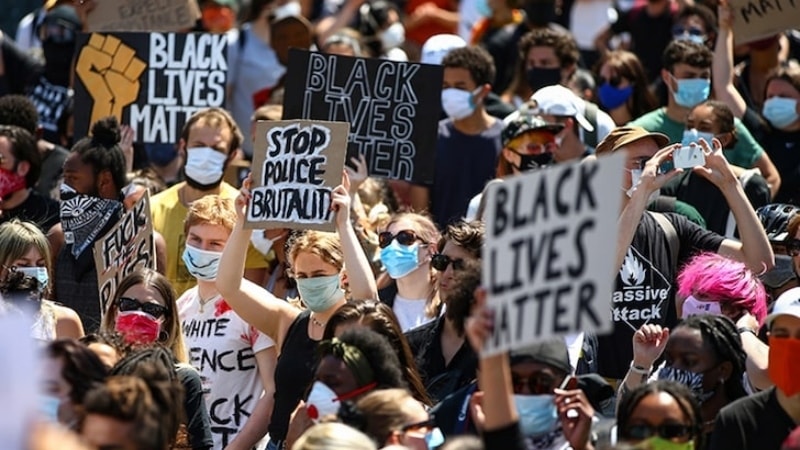 Black Lives Matter / Trans Black Lives Matter / All Black Lives Matter
Black Lives Matter / Trans Black Lives Matter / All Black Lives Matter
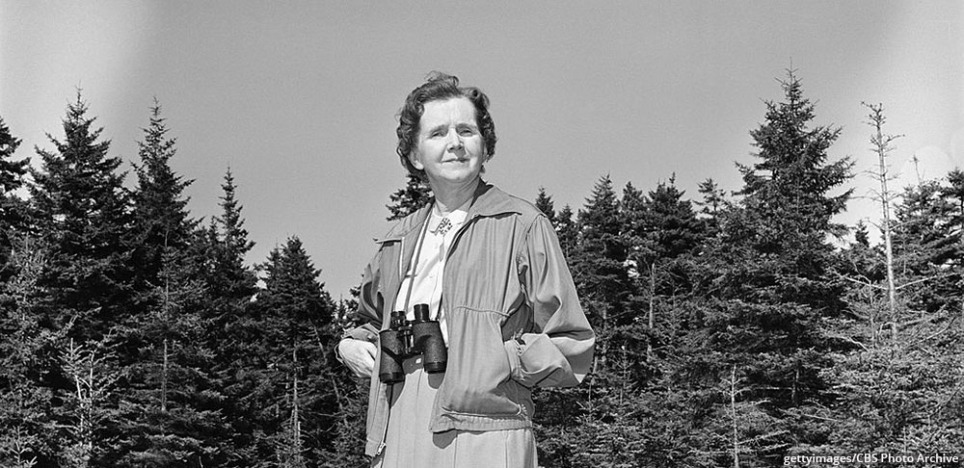 Re-reading Rachel Carson
Re-reading Rachel Carson Sigrid Nunez: What Are You Going Through
Sigrid Nunez: What Are You Going Through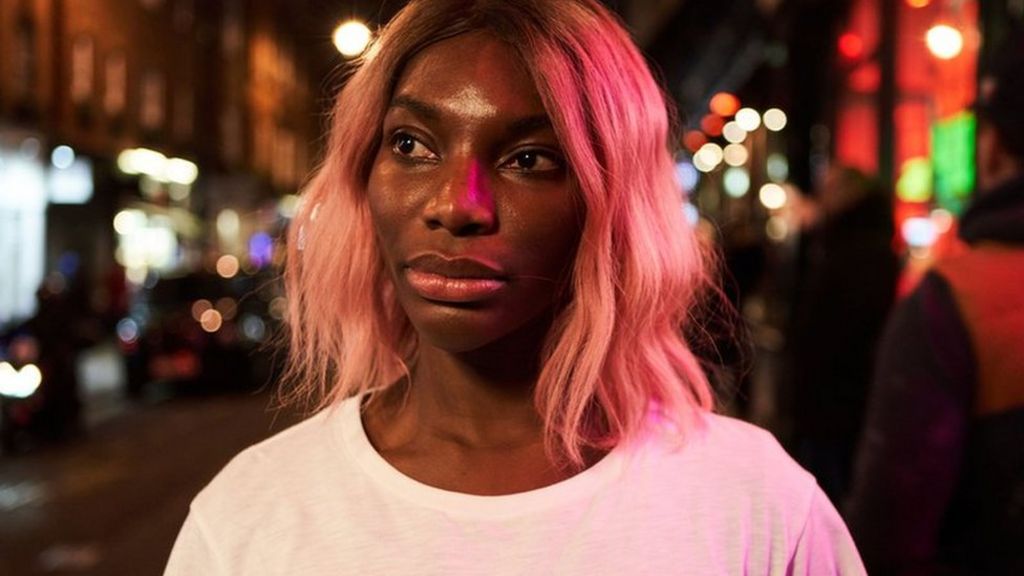 Rediscovering Television / Michaela Coel: I May Destroy You
Rediscovering Television / Michaela Coel: I May Destroy You Gunda (Victor Kossakovsky, dir; written with Ainara Vera; Neon/Hallstone/Larsen/Phoenix)
Gunda (Victor Kossakovsky, dir; written with Ainara Vera; Neon/Hallstone/Larsen/Phoenix)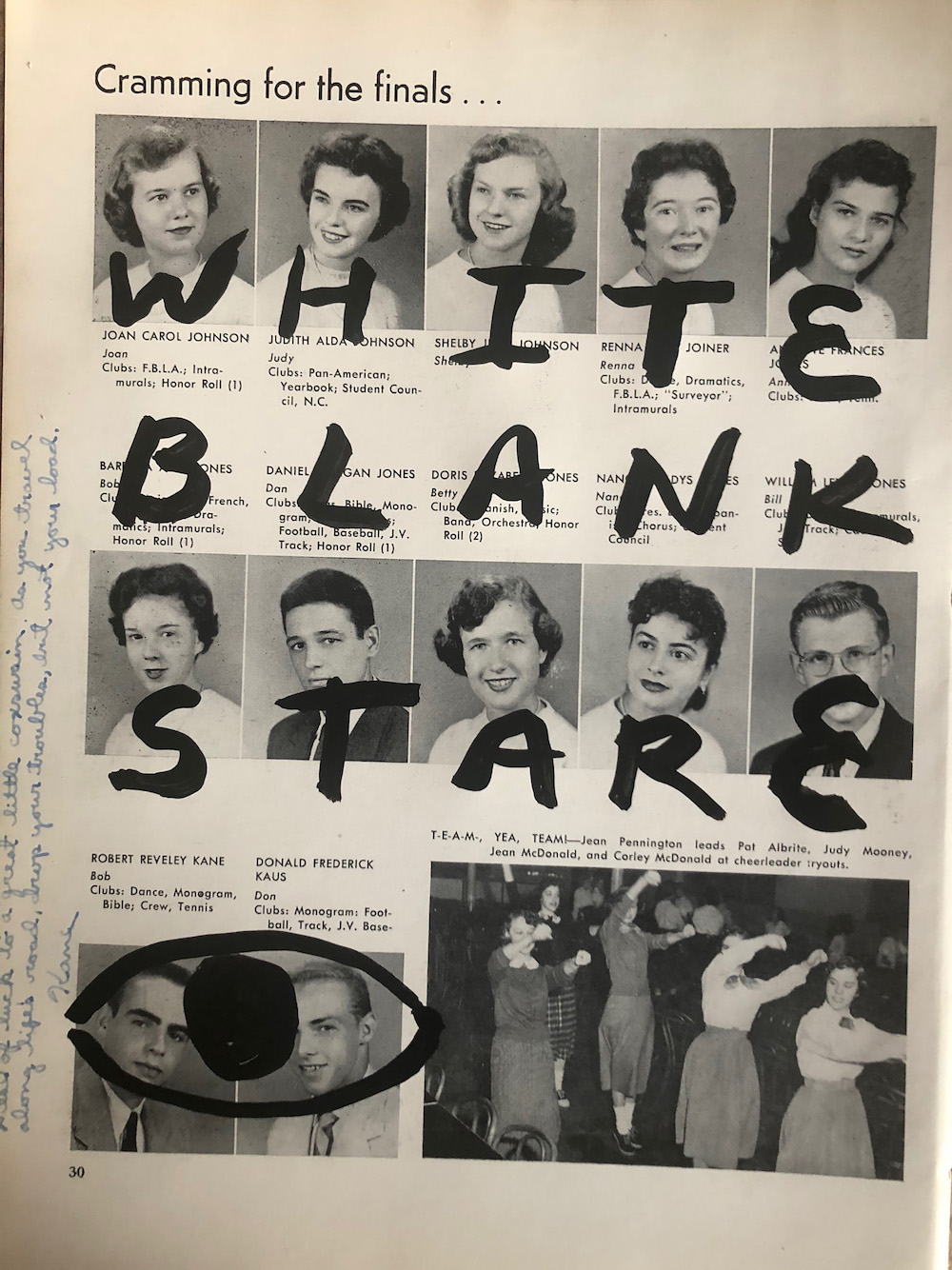

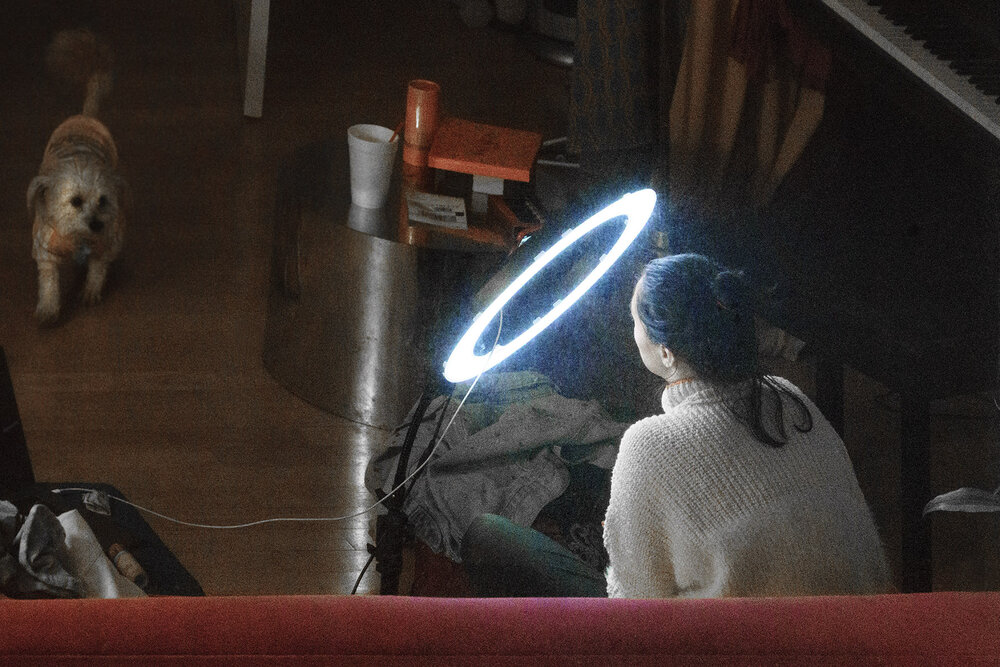 Brendan Lott: Since some point during the first pandemic lock-down, Brendan Lott has been posting images from his Safer At Home series. The subjects are mostly his neighbors across the street, whose loft windows are shot at just the right angle to preserve anonymity while disclosing sufficient detail of lives lived, interests pursued or in suspense, the masquerades that continue behind closed doors. Lott is certainly not the first or only artist or photographer to peer into the windows (rear, side, or façade) of his neighbors. But he captures something crystalline about this moment—not simply about the nature of solitude or sequestration or the way we live now, but the way we frame our lives, the ways in which we encounter and (conceivably) know ourselves. Yes, there is loneliness, frustration, even desperation — but it’s as much our own as its subjects’. With apologies to the late, great John Prine (one of Covid-19’s first victims), say “hello in there.”
Brendan Lott: Since some point during the first pandemic lock-down, Brendan Lott has been posting images from his Safer At Home series. The subjects are mostly his neighbors across the street, whose loft windows are shot at just the right angle to preserve anonymity while disclosing sufficient detail of lives lived, interests pursued or in suspense, the masquerades that continue behind closed doors. Lott is certainly not the first or only artist or photographer to peer into the windows (rear, side, or façade) of his neighbors. But he captures something crystalline about this moment—not simply about the nature of solitude or sequestration or the way we live now, but the way we frame our lives, the ways in which we encounter and (conceivably) know ourselves. Yes, there is loneliness, frustration, even desperation — but it’s as much our own as its subjects’. With apologies to the late, great John Prine (one of Covid-19’s first victims), say “hello in there.”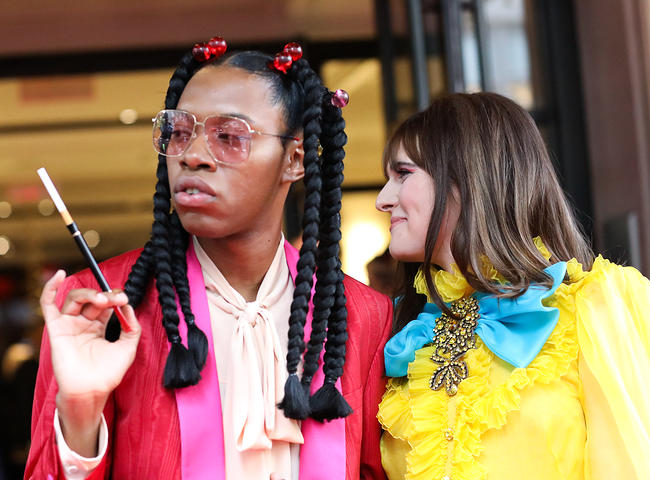 Jeremy O. Harris: The chameleon intellect, genius playwright of Slave Play, fashion-plate, insouciant raconteur and de facto on-line magazine-maker viral enough to stare down the corona-virus. Simply one of the funniest and most brilliant feeds on the platform—which is sort of what we expect and certainly what we need. His Coronavirus Mixtapes are pitched somewhere between a Tod Browning or John Waters freak-fest and a Paris Review for the TikTok generation.
Jeremy O. Harris: The chameleon intellect, genius playwright of Slave Play, fashion-plate, insouciant raconteur and de facto on-line magazine-maker viral enough to stare down the corona-virus. Simply one of the funniest and most brilliant feeds on the platform—which is sort of what we expect and certainly what we need. His Coronavirus Mixtapes are pitched somewhere between a Tod Browning or John Waters freak-fest and a Paris Review for the TikTok generation.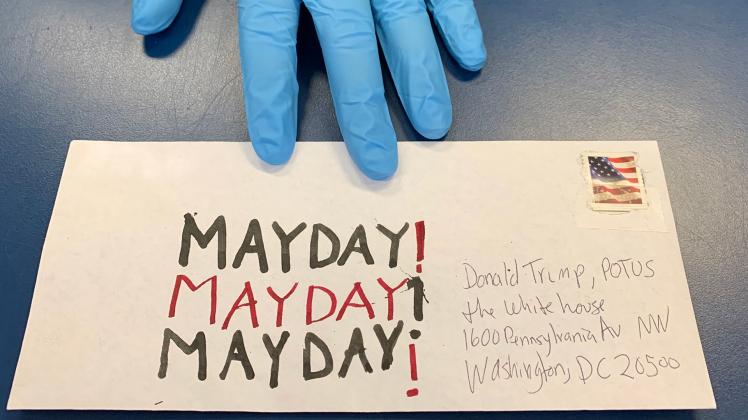 Susan Silton: A potentiality long after its actuality has become a thing of the past; MAYDAY! MAYDAY! MAYDAY!; Quartet for the End of Time
Susan Silton: A potentiality long after its actuality has become a thing of the past; MAYDAY! MAYDAY! MAYDAY!; Quartet for the End of Time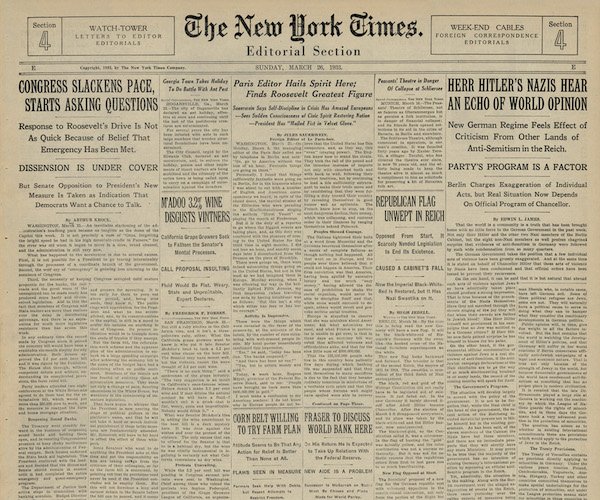 Even prior to these projects, though, her re-imagined and re-conceived staging of the Olivier Messiaen Quartet for the End of Time had sounded a quiet but brightly piercing alarm for the darkness to come. In her staging (which included that non-pareil pianist of contemporary music, Vicki Ray), one of the performers steps forward to recite in staggered fashion a line quoted from Hannah Arendt’s Men In Dark Times: “Even…Even in…Even in the…Even in the darkest….” (The actual sentence reads: “Even in the darkest of times, we have the right to expect some illumination.”) In her book, Arendt goes on to say that “such illumination may come less from theories and concepts than from the uncertain, flickering, and often weak light that some men and women, in their lives and works, will kindle under almost all circumstances and shed over the time-span that was given them on earth.” That flickering light is all we ever really have and Silton manages to connect it like a beacon to the community around her.
Even prior to these projects, though, her re-imagined and re-conceived staging of the Olivier Messiaen Quartet for the End of Time had sounded a quiet but brightly piercing alarm for the darkness to come. In her staging (which included that non-pareil pianist of contemporary music, Vicki Ray), one of the performers steps forward to recite in staggered fashion a line quoted from Hannah Arendt’s Men In Dark Times: “Even…Even in…Even in the…Even in the darkest….” (The actual sentence reads: “Even in the darkest of times, we have the right to expect some illumination.”) In her book, Arendt goes on to say that “such illumination may come less from theories and concepts than from the uncertain, flickering, and often weak light that some men and women, in their lives and works, will kindle under almost all circumstances and shed over the time-span that was given them on earth.” That flickering light is all we ever really have and Silton manages to connect it like a beacon to the community around her.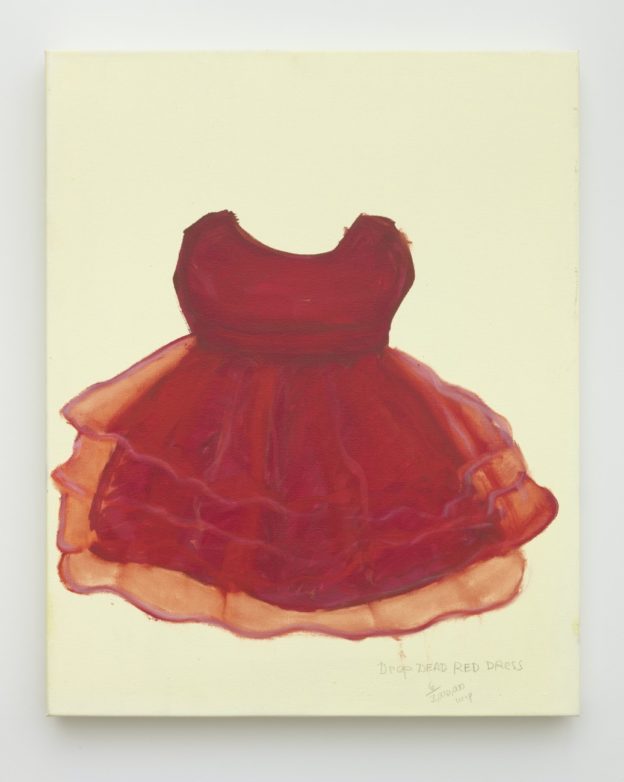 Kim Dingle — Red Dresses and Restaurant Mandalas
Kim Dingle — Red Dresses and Restaurant Mandalas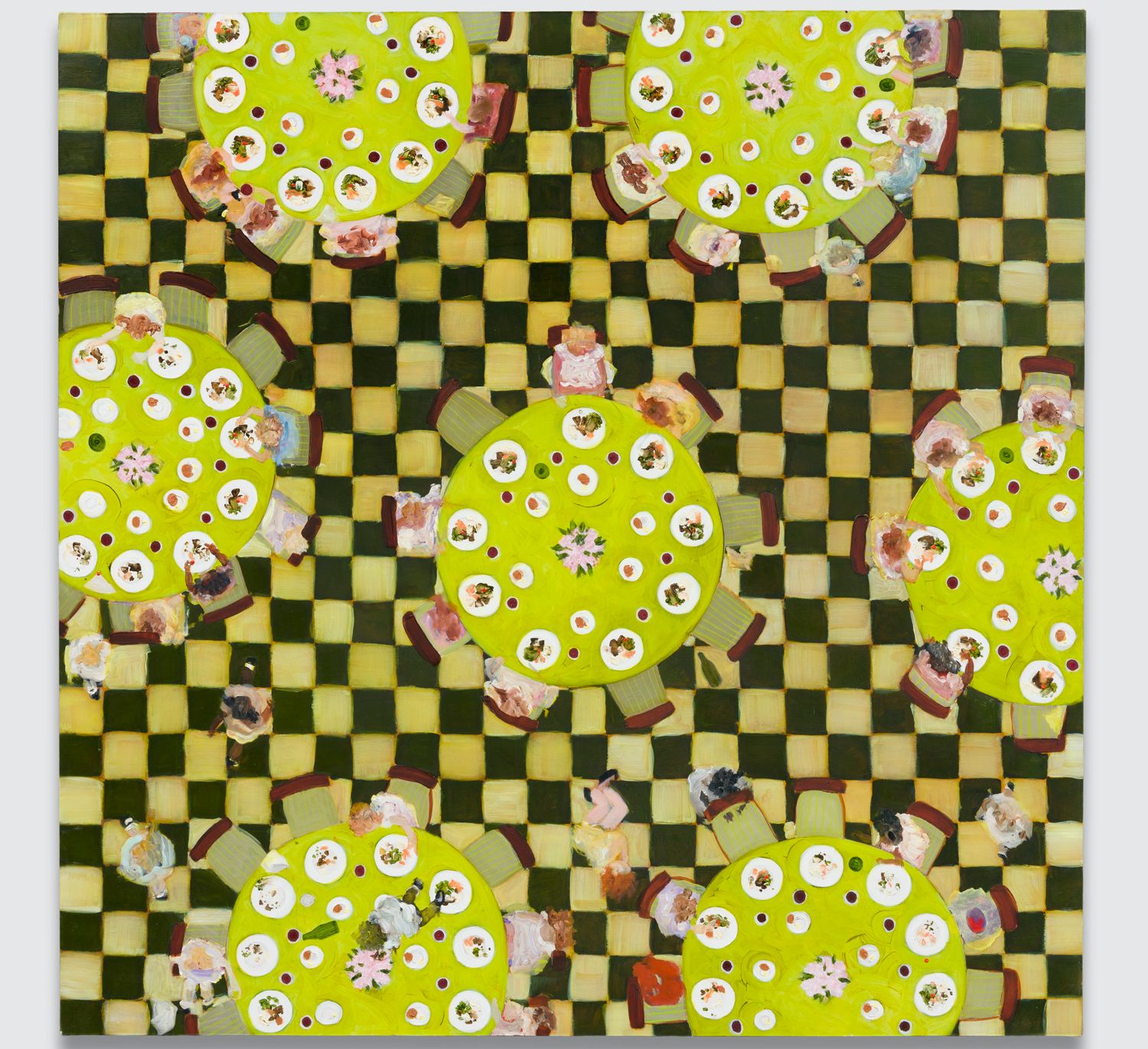 I never found it; and in the meantime Dingle had (of course) moved on, seemingly in a vein both philosophical and nostalgic, with what she called “restaurant mandalas” (at Andrew Kreps in New York)—what evoked (and surely were when they were initiated) restaurant seating and party catering plans. Dingle famously operated a café called Fatty’s in Eagle Rock; and although these paintings felt quite distant from that particular café experience, in their diagrammatic, pattern-and-decoration—spiraling table-settings against the grids of checkered floors — composition, they evoked something of a pre-pandemic attitude — of continuity, of camaraderie, community and hospitality. We miss our girlfriends — and for that matter, the boys, too.
I never found it; and in the meantime Dingle had (of course) moved on, seemingly in a vein both philosophical and nostalgic, with what she called “restaurant mandalas” (at Andrew Kreps in New York)—what evoked (and surely were when they were initiated) restaurant seating and party catering plans. Dingle famously operated a café called Fatty’s in Eagle Rock; and although these paintings felt quite distant from that particular café experience, in their diagrammatic, pattern-and-decoration—spiraling table-settings against the grids of checkered floors — composition, they evoked something of a pre-pandemic attitude — of continuity, of camaraderie, community and hospitality. We miss our girlfriends — and for that matter, the boys, too.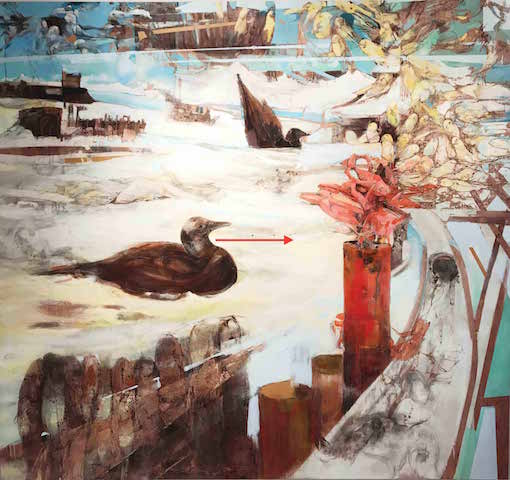 Lisa Adams / Kelly McLane: “Unreality”
Lisa Adams / Kelly McLane: “Unreality”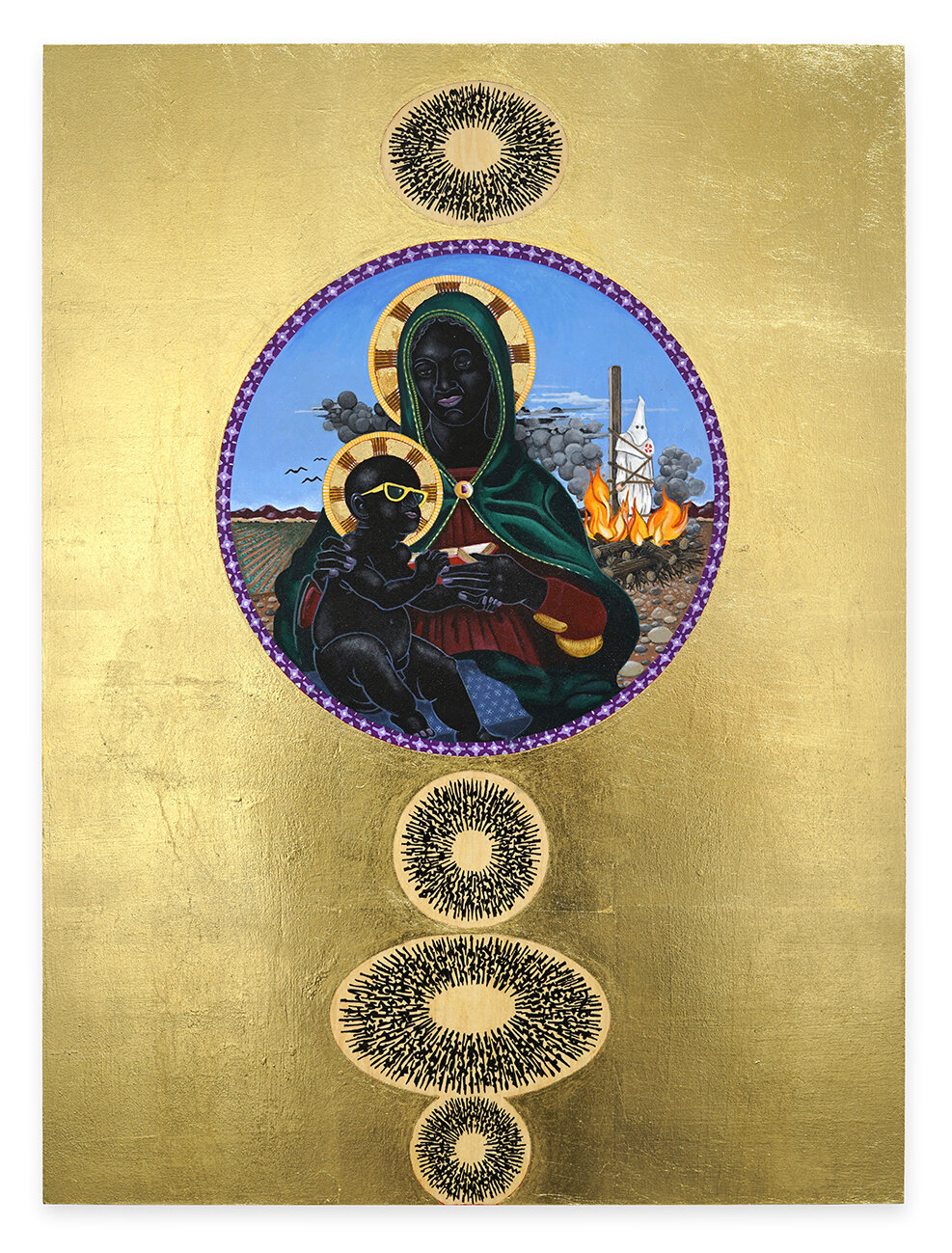 Mark Steven Greenfield: Black Madonnas
Mark Steven Greenfield: Black Madonnas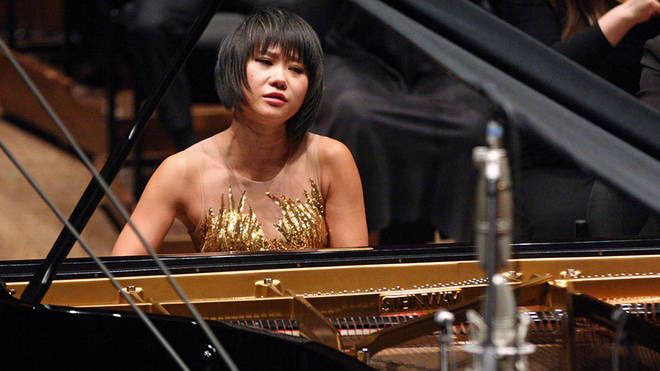 Yuja Wang, February 18, 2020, Disney Hall
Yuja Wang, February 18, 2020, Disney Hall Boris Giltburg
Boris Giltburg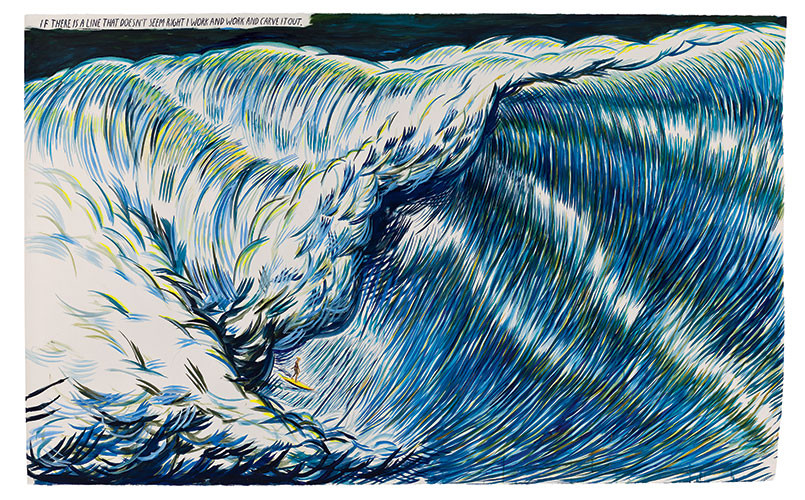 Raymond Pettibon: Where the surf is up per omnia saecula saeculorum.
Raymond Pettibon: Where the surf is up per omnia saecula saeculorum. Stacey Abrams: She saved constitutional democracy in America.
Stacey Abrams: She saved constitutional democracy in America.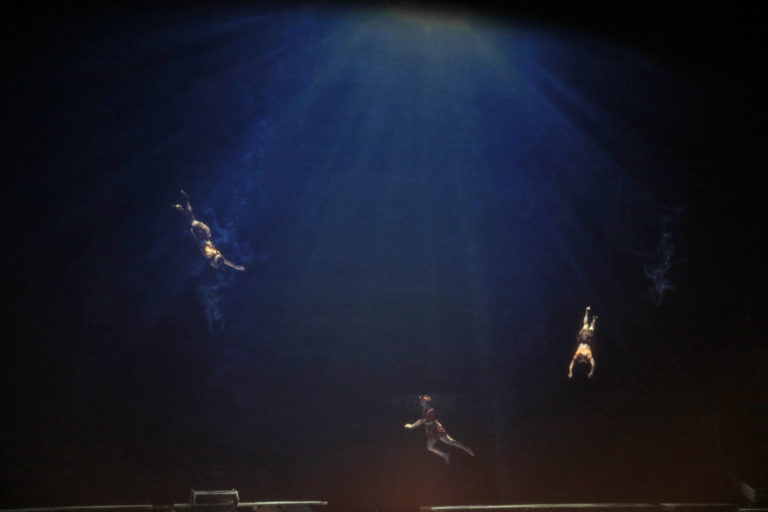
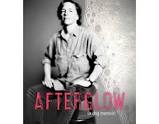 Who needs a Hitchcock movie when we can feel ourselves, individually and as a species, complicit in a crime of violation – personal, social, spatial, environmental – in the pages of a book like this? And all bound up in a testament of unconditional love and animal bonding like no other. It’s a kind of prose-poetry that can be both brutally specific and impressionistic all at once; and like the experience of a life-death transition completely immersive.
Who needs a Hitchcock movie when we can feel ourselves, individually and as a species, complicit in a crime of violation – personal, social, spatial, environmental – in the pages of a book like this? And all bound up in a testament of unconditional love and animal bonding like no other. It’s a kind of prose-poetry that can be both brutally specific and impressionistic all at once; and like the experience of a life-death transition completely immersive. 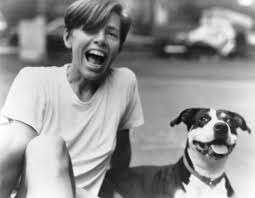

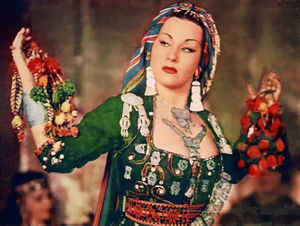 Without going into the particulars of a performance that promised to be spectacular simply given the incomparable foundational support of an ensemble of superb musicians led by percussionist Albert López, who in turn guided, supported and backed up a mostly local and stellar line-up that included Empress of (Lorelei Rodriguez), Nite Jewel (Ramona Gonzalez) – completely worthy of their names, the both of them; Maria Elena Altany, Ceci Bastida, Carmina Escobar, Dorian Wood and Francisca Valenzuela – I will sum it up in a single word: ecstatic.
Without going into the particulars of a performance that promised to be spectacular simply given the incomparable foundational support of an ensemble of superb musicians led by percussionist Albert López, who in turn guided, supported and backed up a mostly local and stellar line-up that included Empress of (Lorelei Rodriguez), Nite Jewel (Ramona Gonzalez) – completely worthy of their names, the both of them; Maria Elena Altany, Ceci Bastida, Carmina Escobar, Dorian Wood and Francisca Valenzuela – I will sum it up in a single word: ecstatic.
 Ultimately, I felt the cumulative impact was more clinical than poetic. But even spoken poetry can come across this way, as a poet like Myles would be the first to recognize. The poetry is still there; and it’s always a privilege to be in this poet-musician’s head for a couple of hours.
Ultimately, I felt the cumulative impact was more clinical than poetic. But even spoken poetry can come across this way, as a poet like Myles would be the first to recognize. The poetry is still there; and it’s always a privilege to be in this poet-musician’s head for a couple of hours.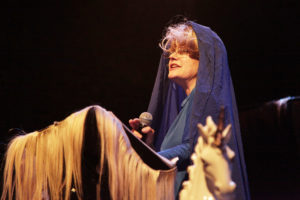
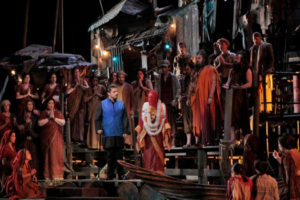 (It was the most brilliant performance I’ve seen her give to date.) Alfredo Daza as Zurga seemed almost churlish to resist her entreaties, quite apart from the legacy Zurga unconsciously betrays in his resistance. As creakily as the opera has aged, there were treasures, ‘pearls’ yet to be salvaged from it. The program notes made reference to the opera’s obvious ‘orientalism’; but even as we took in its kaleidoscopic scenic and melodic splendors, it was impossible to ignore what lay beyond the surface, beyond the stranglehold of custom and religious orthodoxy, beyond the characters’ gaze itself.
(It was the most brilliant performance I’ve seen her give to date.) Alfredo Daza as Zurga seemed almost churlish to resist her entreaties, quite apart from the legacy Zurga unconsciously betrays in his resistance. As creakily as the opera has aged, there were treasures, ‘pearls’ yet to be salvaged from it. The program notes made reference to the opera’s obvious ‘orientalism’; but even as we took in its kaleidoscopic scenic and melodic splendors, it was impossible to ignore what lay beyond the surface, beyond the stranglehold of custom and religious orthodoxy, beyond the characters’ gaze itself.